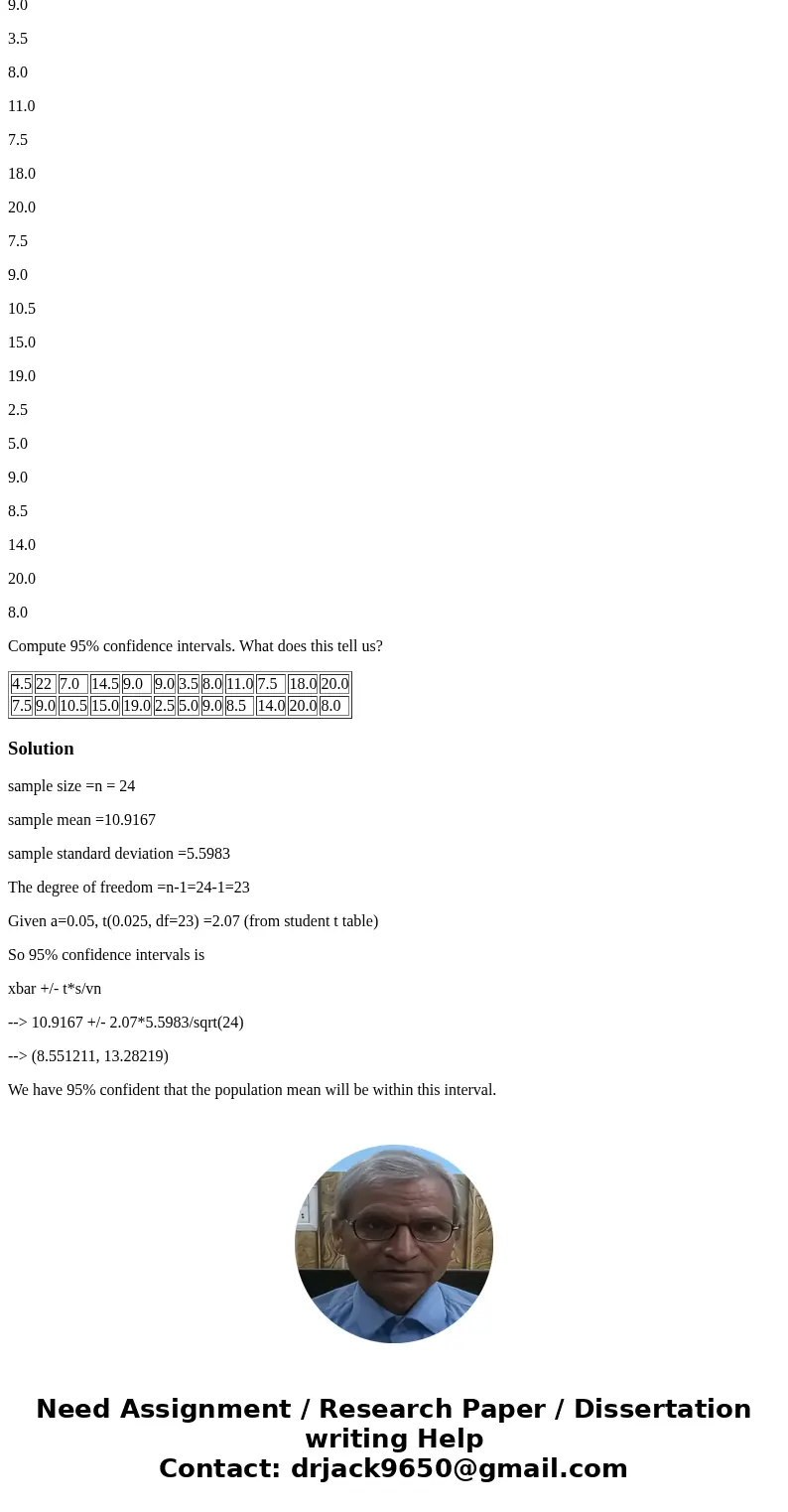Samples of our students from an applied experimental design
Samples of our students from an applied experimental design class were polled regarding the number of hours they spent studying for the last exam. All students anonymously submitted the number of hours on a 3x5 card. There were 24 individuals in the section of the course polled. The data was used to make inferences regarding students taking other sections of the same course. Below is the data:
4.5
22
7.0
14.5
9.0
9.0
3.5
8.0
11.0
7.5
18.0
20.0
7.5
9.0
10.5
15.0
19.0
2.5
5.0
9.0
8.5
14.0
20.0
8.0
Compute 95% confidence intervals. What does this tell us?
| 4.5 | 22 | 7.0 | 14.5 | 9.0 | 9.0 | 3.5 | 8.0 | 11.0 | 7.5 | 18.0 | 20.0 |
| 7.5 | 9.0 | 10.5 | 15.0 | 19.0 | 2.5 | 5.0 | 9.0 | 8.5 | 14.0 | 20.0 | 8.0 |
Solution
sample size =n = 24
sample mean =10.9167
sample standard deviation =5.5983
The degree of freedom =n-1=24-1=23
Given a=0.05, t(0.025, df=23) =2.07 (from student t table)
So 95% confidence intervals is
xbar +/- t*s/vn
--> 10.9167 +/- 2.07*5.5983/sqrt(24)
--> (8.551211, 13.28219)
We have 95% confident that the population mean will be within this interval.


 Homework Sourse
Homework Sourse